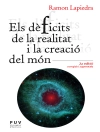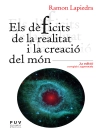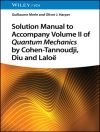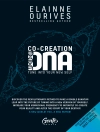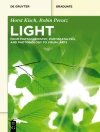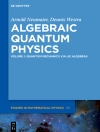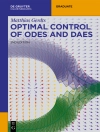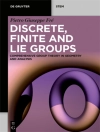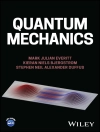Introduction to Continuous Symmetries
Powerful and practical symmetry-based approaches to quantum phenomena
In Introduction to Continuous Symmetries, distinguished researcher Franck Laloë delivers an insightful and thought-provoking work demonstrating that the underlying equations of quantum mechanics emerge from very general symmetry considerations without the need to resort to artificial or ambiguous quantization rules. Starting at an elementary level, this book explains the computational techniques such as rotation invariance, irreducible tensor operators, the Wigner—Eckart theorem, and Lie groups that are necessary to understand nuclear physics, quantum optics, and advanced solid-state physics.
The author offers complementary resources that expand and elaborate on the fundamental concepts discussed in the book’s ten accessible chapters. Extensively explained examples and discussions accompany the step-by-step physical and mathematical reasoning. Readers will also find:
- A thorough introduction to symmetry transformations, including fundamental symmetries, symmetries in classical mechanics, and symmetries in quantum mechanics
- Comprehensive explorations of group theory, including the general properties and linear representations of groups
- Practical discussions of continuous groups and Lie groups, in particular SU(2) and SU(3)
- In-depth treatments of representations induced in the state space, including discussions of Wigner’s Theorem and the transformation of observables
Perfect for students of physics, mathematics, and theoretical chemistry, Introduction to Continuous Symmetries will also benefit theoretical physicists and applied mathematicians.
Cuprins
I Symmetry transformations 1
A Basic symmetries 1
B Symmetries in classical mechanics 5
C Symmetries in quantum mechanics 26
AI Eulerian and Lagrangian points of view in classical mechanics 31
1 Eulerian point of view 32
2 Lagrangian point of view 34
BI Noether’s theorem for a classical field 38
1 Lagrangian density and Lagrange equations for continuous variables 38
2 Symmetry transformations and current conservation 40
3 Generalization, relativistic notation 41
4 Local conservation of energy 42
II Some ideas about group theory 45
A General properties of groups 46
B Linear representations of a group 56
AII Left coset of a subgroup; quotient group 65
1 Left cosets 65
2 Quotient group 66
III Introduction to continuous groups and Lie groups 69
A General properties 70
B Examples 85
C Galilean and Poincaré groups 98
AIII Adjoint representation, Killing form, Casimir operator 109
1 Adjoint representation of a Lie algebra 109
2 Killing form ; scalaire product and change of basis in L 111
3 Completely antisymmetric structure constants 113
4 Casimir operator 114
IV Induced representations in the state space 117
A Conditions imposed on the transformations in the state space 119
B Wigner’s theorem 121
C Transformations of observables 126
D Linear representations in the state space 128
E Phase factors and projective representations 133
AIV Unitary projective representations, with finite dimension, of connected Lie groups. Bargmann’s theorem 141
1 Case where G is simply connected 142
2 Case where G is p-connected 145
BIV Uhlhorn-Wigner theorem 149
1 Real space 149
2 Complex space 153
V Representations of Galilean and Poincaré groups: mass, spin, and energy 157
A Representations in the state space 158
B Galilean group 159
C Poincaré group 173
AV Proper Lorentz group and SL(2C) group 191
1 Link to the SL(2, C) group 191
2 Little group associated with a four-vector 198
3 W2 operator 202
BV Commutation relations of spin components, Pauli–Lubanski four-vector 205
1 Operator S 205
2 Pauli–Lubanski pseudovector 207
3 Energy-momentum eigensubspace with any eigenvalues 210
CV Group of geometric displacements 213
1 Brief review: classical properties of displacements 214
2 Associated operators in the state space 223
DV Space reflection (parity) 233
1 Action in real space 233
2 Associated operator in the state space 235
3 Parity conservation 237
VI Construction of state spaces and wave equations 241
A Galilean group, the Schrödinger equation 242
B Poincaré group, Klein–Gordon, Dirac, and Weyl equations 254
AVI Relativistic invariance of Dirac equation and non-relativistic limit 273
1 Relativistic invariance 273
2 Non-relativistic limit of the Dirac equation 276
BVI Finite Poincaré transformations and Dirac state space 281
1 Displacement group 281
2 Lorentz transformations 283
3 State space and Dirac operators 287
CVI Lagrangians and conservation laws for wave equations 293
1 Complex fields 293
2 Schrödinger equation 295
3 Klein–Gordon equation 297
4 Dirac equation 300
VII Rotation group, angular momenta, spinors 303
A General properties of rotation operators 304
B Spin 1/2 particule; spinors 323
C Addition of angular momenta 329
AVII Rotation of a spin 1/2 and SU(2) matrices 339
1 Modification of a spin 1/2 polarization induced by an SU(2) matrix 340
2 The transformation is a rotation 341
3 Homomorphism 342
4 Link with the chapter VII discussion 344
5 Link with double-valued representations 346
BVII Addition of more than two angular momenta 347
1 Zero total angular momentum; 3-j coefficients 347
2 6-j Wigner coefficients 351
VIII Transformation of observables under rotation 355
A Scalar and vector operators 358
B Tensor operators 363
C Wigner–Eckart theorem 379
D Applications and examples 384
AVIII Short review of classical tensors 397
1 Vectors 397
2 Tensors 398
3 Properties 401
4 Criterium for a tensor 403
5 Symmetric and antisymmetric tensors 403
6 Specific tensors 404
7 Irreducible tensors 405
BVIII Second-order tensor operators 409
1 Tensor product of two vector operators 409
2 Cartesian components of the tensor in the general case 411
CVIII Multipole moments 415
1 Electric multipole moments 416
2 Magnetic multipole moments 428
3 Multipole moments of a quantum system with a given angular momentum J 434
DVIII Density matrix expansion on tensor operators 439
1 Liouville space 439
2 Rotation transformation 441
3 Basis of the T[K]Q operators 442
4 Rotational invariance in a system’s evolution 444
IX Internal symmetries, SU(2) and SU(3) groups 449
A System of distinguishable but equivalent particles 451
B SU(2) group and isospin symmetry 466
C SU(3) symmetry 472
AIX The nature of a particle is equivalent to an internal quantum number 497
1 Partial or complete symmetrization, or antisymmetrization, of a state vector 497
2 Correspondence between the states of two physical systems 499
3 Physical consequences 501
BIX Operators changing the symmetry of a state vector by permu-tation 503
1 Fermions 503
2 Bosons 506
X Symmetry breaking 507
A Magnetism, breaking of rotational symmetry 508
B A few other examples 515
Appendix 521
Time reversal 521
1 Time reversal in classical mechanics 522
2 Antilinear and antiunitary operators in quantum mechanics 527
3 Time reversal and antilinearity 534
4 Explicit form of the time reversal operator 542
5 Applications 546
Despre autor
Franck Laloë is a researcher at the Kastler-Brossel Laboratory of the Ecole Normale Supérieure in Paris, France. His research is focused on optical pumping, the statistical mechanics of quantum gases, musical acoustics, and the foundations of quantum mechanics.



